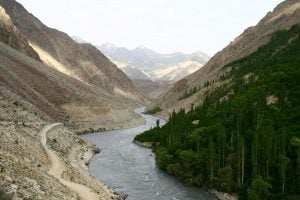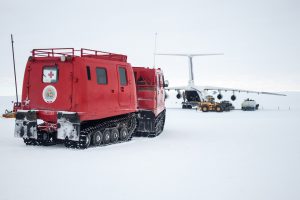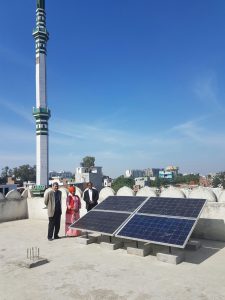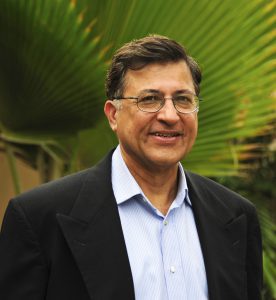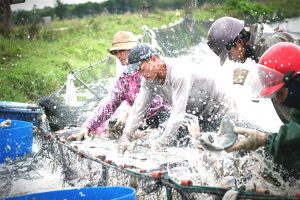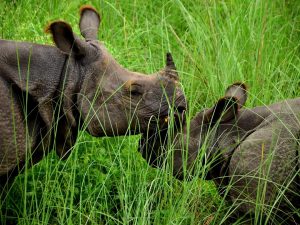As part of an innovative project the Indian Ministry of Earth Sciences sent two young PhD scholars to study at the Norwegian Polar Institute in Tromso. They have now been conducting their research there for two and half years. Both of them are glaciologists, although the research focus of one is the Arctic and the other is the Antarctic. This first interview is with Ankit Pramanik, whose research focus is on how glaciers melt in the Arctic region, and how that meltwater reaches the sea.
The second interview, with Vikram Goel, is here.
How did you get interested in this programme?
Ankit Pramanik (AK): I did my bachelors and masters in Physics. I was interested in doing my PhD in an area which is related to physics. Glaciers, climate and cryosphere research are areas where the backbone is physics and geophysics. I learned of this collaborative programme between India and Norway when an advertisement came out on the website of the National Centre for Antarctic and Ocean Research (NCAOR). I applied, was called for an interview, and was lucky enough to be accepted for the programme.
Tell us about the topic of your research.
AK: I am doing PhD on glaciers in Svalbard. To be specific I am working in Kongsfjord area which is close to Ny-Ålesund in North-West Svalbard. Kongsfjord is surrounded by glaciers of different shape and size. I am investigating how glaciers interact with different energy fluxes which are responsible for melt and also on how different parts of a glacier gain mass through precipitation. These all are being used to create an energy balance model to understand how much melt water is produced in particular time interval and how much water is added to the fjord. Also my work looks at the mechanism of how melt water is transported through different channels before disappearing into the fjord.
![Glaciers of Kongsfjord area [image by Norwegian Polar Institute]](/wp-content/uploads/2017/02/Kongsfjord.jpg)
What is the importance of this research?
AK: Glaciers are a source of fresh water. Meltwater from the glaciers ends up into the fjord which contains salt water (sea water). The mixing of fresh water with the sea water of the fjord influences the ecosystem of the fjord – that is where much of the life systems flourish. This information is also of interest to oceanographers who are doing modelling this area to know how much fresh water is mixed in different time of the year.
In general, glaciers are very vulnerable to changing climate. We need to study them to understand the impact of climate change. Apart from sea level rise, they need to be studied to understand the past climate. In the Himalayas many big rivers originate from glaciers and significant percentage of peoples’ life is dependent on these rivers. We also need to study them to understand their impact on hydropower projects, as well as to predict and deal with glacier lake outburst floods.
![A glacier melting into the fjord [image by Norwegian Polar Institute]](/wp-content/uploads/2017/02/A-glacier-melting-into-the-sea-image-by-Norwegian-Polar-Institute.jpg)
AK: Yes, this study could be applied to glacier research in the Himalayas as well. My present work is to understand the processes that are happening on surface and subsurface of glaciers. Although the climate in Arctic and climate in Himalayas is very different but the basic physics of glaciers is not very different. So, the knowledge (modelling and field work) that I am gaining by working in arctic glaciers would be very useful for research in Himalayas as well.
Has being in Tromso helped you in your research?
AK: Yes, certainly being in Norwegian Polar Institute (NPI) in Tromsø helped me a lot in my research. NPI is working on glaciers in both Arctic and Antarctic for long time. They have experienced logistic personnel as well as scientists. We need to go through safety and rescue training for the glacier field work. Undertaking this training with experienced personnel made me learn better safety training. Working with the scientists during field work as well as modelling helped me to enrich my knowledge in both the areas of this research which is very important in this field.
What do you see yourself doing in the future, now that 2.5 years of your 3 years is over?
AK: I love my work. I would like to continue working on glaciers in Arctic. I also would like to work on Himalayan glaciers. I want to continue and explore this area of research with further study. If opportunity arises, I would like to contribute on the Indian research on both Arctic and Himalayas in future through my work.
![<p>Out on the Arctic ice for field study [image by Ankit Pramanik]</p>](https://dialogue.earth/content/uploads/2017/02/Ankit-Pramanikjpg.jpg)

